TCR affinity and tolerance mechanisms converge to shape T cell diabetogenic potential
- PMID: 24943217
- PMCID: PMC4082738
- DOI: 10.4049/jimmunol.1400043
TCR affinity and tolerance mechanisms converge to shape T cell diabetogenic potential
Abstract
Autoreactive T cells infiltrating the target organ can possess a broad TCR affinity range. However, the extent to which such biophysical parameters contribute to T cell pathogenic potential remains unclear. In this study, we selected eight InsB9-23-specific TCRs cloned from CD4(+) islet-infiltrating T cells that possessed a relatively broad range of TCR affinity to generate NOD TCR retrogenic mice. These TCRs exhibited a range of two-dimensional affinities (∼ 10(-4)-10(-3) μm(4)) that correlated with functional readouts and responsiveness to activation in vivo. Surprisingly, both higher and lower affinity TCRs could mediate potent insulitis and autoimmune diabetes, suggesting that TCR affinity does not exclusively dictate or correlate with diabetogenic potential. Both central and peripheral tolerance mechanisms selectively impinge on the diabetogenic potential of high-affinity TCRs, mitigating their pathogenicity. Thus, TCR affinity and multiple tolerance mechanisms converge to shape and broaden the diabetogenic T cell repertoire, potentially complicating efforts to induce broad, long-term tolerance.
Copyright © 2014 by The American Association of Immunologists, Inc.
Figures
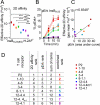

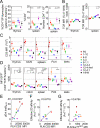
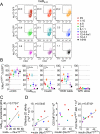
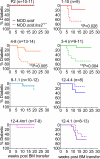
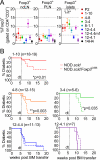
References
-
- Davis MM, Boniface JJ, Reich Z, Lyons D, Hampl J, Arden B, Chien Y. Ligand recognition by alpha beta T cell receptors. Annu Rev Immunol. 1998;16:523–544. - PubMed
-
- Cole DK, Pumphrey NJ, Boulter JM, Sami M, Bell JI, Gostick E, Price DA, Gao GF, Sewell AK, Jakobsen BK. Human TCR-binding affinity is governed by MHC class restriction. J Immunol. 2007;178:5727–5734. - PubMed
-
- van der Merwe PA, Davis SJ. Molecular interactions mediating T cell antigen recognition. Annu Rev Immunol. 2003;21:659–684. - PubMed
-
- Palmer E, Naeher D. Nat Rev Immunol. 2009;Affinity threshold for thymic selection through a T-cell receptor-co-receptor zipper.9:207–213. - PubMed
Publication types
MeSH terms
Substances
Grants and funding
LinkOut - more resources
Full Text Sources
Other Literature Sources
Medical
Molecular Biology Databases
Research Materials

